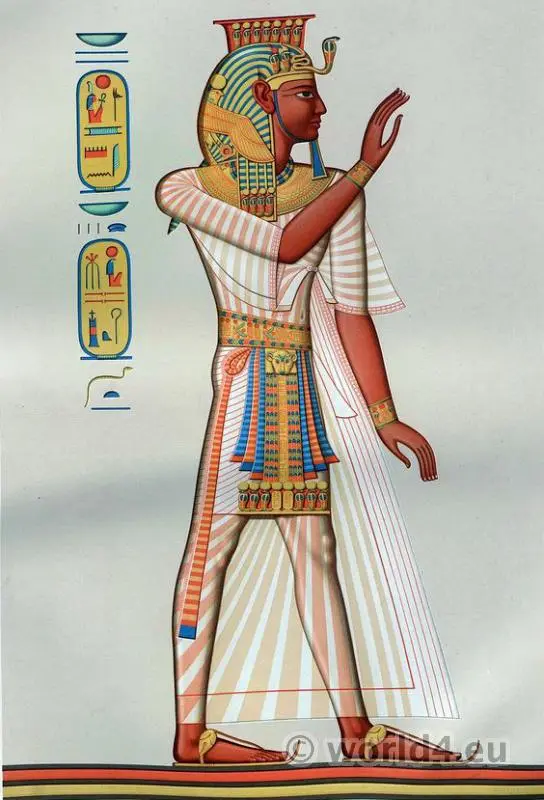The ancient Egyptian pharaohs had considered divine rulers and pivotal figures in Egyptian society. They adorned themselves with elaborate clothing that symbolized their power, status, and connection to the gods. As we focus on the meanings of how they dress with the texture and what other pieces they added to their whole style. This blog highlights everything you want to learn about this interesting topic in connection strongly with their significance culture!

Official pharaohs attire
Pharaohs dressed in very airy, light linen clothing due to the country’s hot, dry climate. Although pharaohs also wore linen garments, their attire was more sophisticated and detailed than that of the other people. But also because they had great religious and political significance. The Shendyt was the king’s garment which is generally from pieces of linen that are put together in pleats or decorated with precious stones and intricate embroidery. There was variance in the quality and color of the linen based on his status as a pharaoh or occasion.
Pharaoh also put on ceremonial robes with headdresses during important rituals and ceremonies. One of the most famous items is the Nemes. It is a striped headpiece that covers the king’s face down to his shoulders. Having a royal uraeus (symbol of a cobra) on its forehead sometimes including false gods’ beards too. This headgear shows that he was a god-like person who had an association mainly with Ra, who is one of their main gods.
On formal occasions and in war times. Pharaohs donned warrior’s tabard which serves as an apron ornamented with symbolic patterns and protective signs.

More than just a fashion
Most of the ancient Egyptians’ clothing were made of linen, and sheep’s wool, goat hair, and palm fibers were also available. Cotton became popular only in the first century AD, and silk after the seventh century AD.
The advent of color was the reason to have more expensive items, and they reused the worn clothing because to the ancient Egyptians clothing was a valuable commodity.
Women’s fashion from this period was more elaborate than any previous era, and both sexes used wigs to protect the scalp and for ceremonial purposes.
New Kingdom era wigs are the most ornate, especially for women, and feature pleated, fringed, and layered styles at shoulder length or below.
Sheer gowns made of light linen were upper-class women’s favorite, often adorned with a sash or cape, belted at the waist, and accessorized with a headdress, necklace, and earrings.



0 Comment